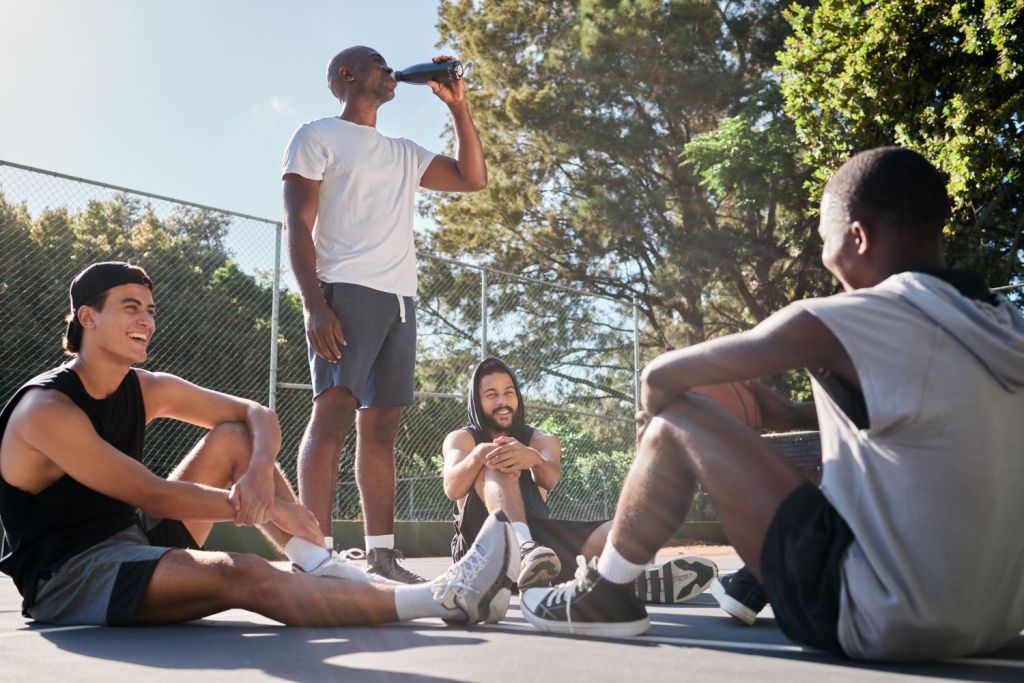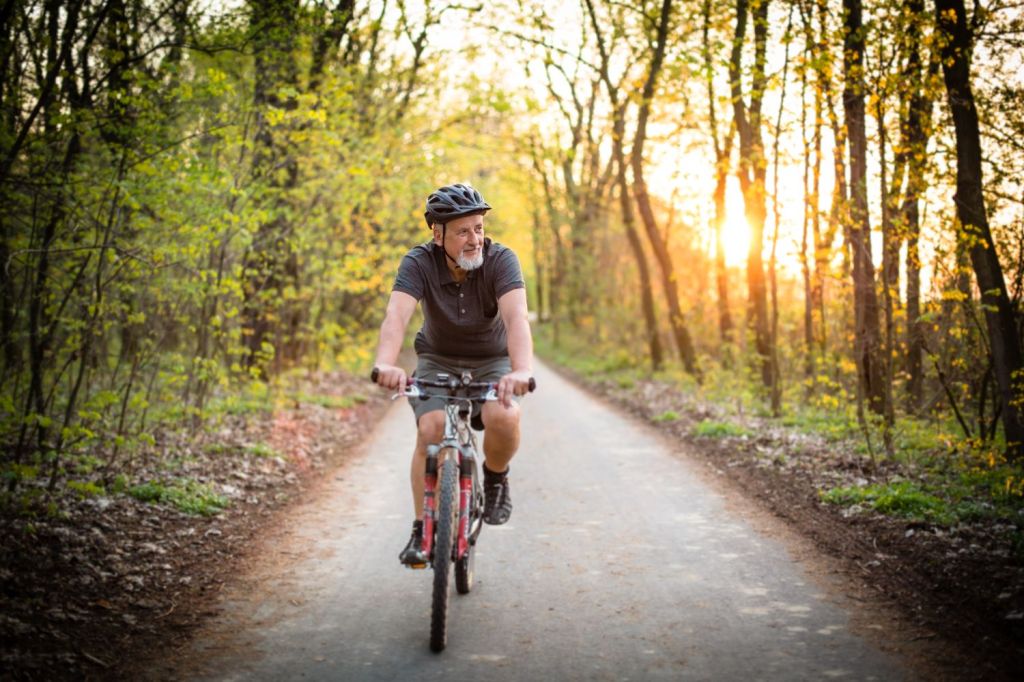According to some researchers, exercising in nature might be better for us than working out indoors. However, a recent meta-analysis implies that the jury is still out.
Everyone knows that to stay healthy, we all need to throw on our workout clothes and exercise regularly. But, have you ever considered what impact your environment might have on the effectiveness of your workout? Well, a pair of researchers in America have compiled the results of existing studies on the topic and concluded that, although exercising in nature might offer some tangible gains over exercising indoors, there are still some questions to be answered.
This meta-analysis paper, Maddock & Frumkin (2024), was recently published in the American Journal of Lifestyle Medicine, and is available to read for free online. For now though, I’ve put together a summary of the main points.

What are the benefits of exercising in nature?
Prior research highlights several. For example, across multiple data sets, there is evidence to suggest that physical activity in natural settings (which I’ll refer to as PANS from here on) can enhance cognitive function and social interactions, to a greater degree than if you were to exercise either indoors or in an urban ‘nature-poor’ setting.
For instance, Bailey et al. (2018) observed that volunteers who walked along a natural trail subsequently performed better than their peers at simple cognitive assessments like the Stroop Test, and even displayed a more ‘meditative’ mental state when hooked up to an EEG. Meanwhile, Rogerson et al. (2016) claimed that volunteers who engaged in PANS enjoyed higher-quality social interactions compared to volunteers who exercised indoors.
Importantly though, Maddock & Frumkin point out that a lot of the published research which makes those conclusions involves small, short-term data sets, and independent assessors have highlighted the likelihood – conscious or not – of bias in favor of exercising in nature. As such, the authors of this meta-analysis have called for the collection of a new wave of long-term data, ideally over the course of a year or more. That way, assuming that the methodology stands up to scrutiny, the health and fitness industry will have a far more definitive set of results to base its advice and engagement programs upon.
Could PANS affect my physical performance?
So, we’ve covered the mental aspect of things, but you might be wondering whether your environment can affect your physical performance too. Maddock & Frumkin don’t directly reference that in their work – in fact, level of exertion was on one of their controlled variables – but I would suggest that the answer is likely to shift on a case-by-case basis.
For example, if you’re focused on strength training, a well-equipped public or private indoor gym is likely to be more conducive to success in gaining serious muscle (though it is possible to achieve great results outside too). However, a lot of the difference in your physical performance will come from personality factors, rather than anything external. If you’re intimidated by a public indoor gym setting, and don’t have the space for home gym equipment, you may get better results from the contrasting openness of PANS.
Similarly, if you’re focusing on cardio but get bored on the treadmill, a visually and/or socially stimulating outdoor jog or run may spur you on to exercise over longer distances, thus improving your performance. Ultimately, it all comes down to mental comfort. If you feel good about your place within your surrounding environment, you’ll likely put more effort into your workouts over a longer stretch of time, more consistently.

Barriers to exercising in nature, and how to overcome them
It’s important to note that various people may face hurdles preventing them from taking part in PANS. Maddock & Frumkin go over this in great detail, but the most striking points from their general findings are as follows:
First of all, there’s the simple issue of access. In their paper, Maddock & Frumkin reference the point that 97.3% of people in Illinois live within half a mile of a park, but only 29.0% of people in Mississippi can say the same. Clearly, geography has a big impact, especially if these green spaces command an entry fee or have specific opening times. But it goes deeper than that.
Certain demographics may respond to green spaces differently too. Part of that comes down to the concept of safety. Surveys suggest that, particularly in the case of women, senior citizens, and parents, attendance of parks is strongly linked to people’s perceptions of how safe or well-policed the area is. Furthermore, poorer urban areas are likely to have fewer or lower-quality green spaces compared to more affluent urban areas. Consequently, in the West, this can mean that BIPOC populations and enclaves are at a particular disadvantage.
So, how do you combat these (and other) issues? The solution is complex, but two possible ideas to make up part of the answer include prescriptive activities from healthcare professionals, and well-regulated group activities hosted by independent clubs or organizations. Including PANS in a clinical health context elevates its perceived importance, while group activities should help to provide the safety in numbers that people of minority or vulnerable backgrounds are looking for, especially if governed by a big, known organization. In that scenario, any potential involved costs may be subsidized by the organization too, depending on the cause.
Conclusion
By now, it should be apparent that the relationship between exercise and environment is a multi-faceted one. However, as Maddock & Frumkin note, PANS’ potential for good is theoretically very high, as it combines the improvement of both physical and mental health at once. Again, more long-term research is needed to truly hammer home the scientific grounds for it, but for now, perhaps we don’t need definitive answers. If exercising in nature feels good to you, you should do it – it’s as simple as that. And if it’s something you’ve never tried before – perhaps you’ve always been curious about it, are seeking more social opportunities, or are simply tired of the hustle and bustle of your local gym – maybe this is the sign that you should give it a go.







